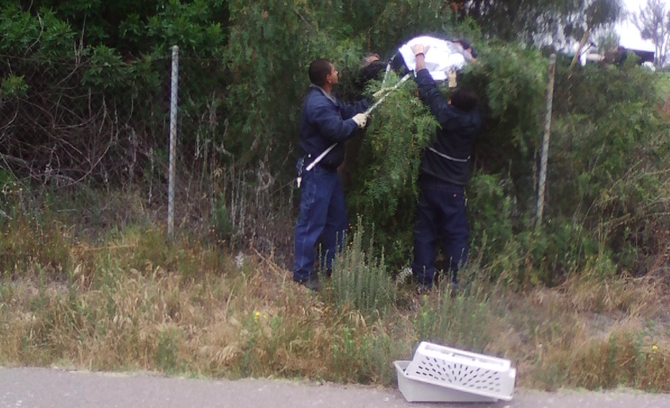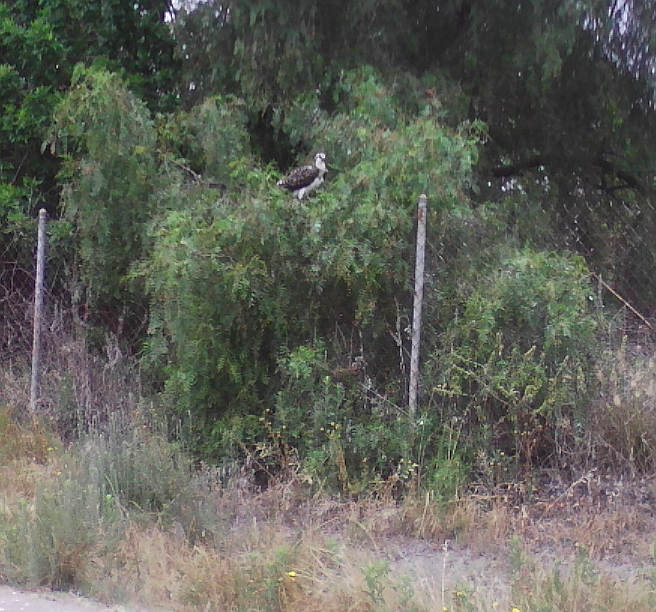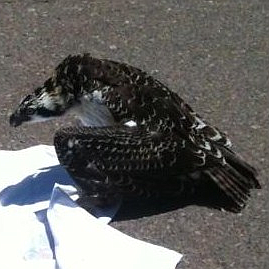 Facebook
Facebook
 X
X
 Instagram
Instagram
 TikTok
TikTok
 Youtube
Youtube

Lisa Culver, the CEO of Project Wildlife, has reported the condition of the two baby ospreys that fell out of their nest at Lake Murray on June 5 and June 21.
The manmade nest is located on top of an SDG&E pole at the two-mile mark along the trail around the lake. One baby fell out on June 5th and the other one fell out on Friday, June 21st.

The first fallen osprey is fine at the wildlife refuge but will never fly; its wing is deformed. It will be taken care of until it dies a natural death. The osprey is being fed its favorite treat, which happens to be trout. When the bird's health improves, it will be transferred to a different place for observation and study on how to help other birds with similar wing injuries. The location is not yet known.

The second osprey, which had fishing line wrapped around its legs, has died. The bird had its left leg amputated but still had infection spread throughout its body. The osprey was becoming emaciated, was suffering, and, therefore, the decision was made to have it euthanized.
Culver suggests that fishermen cut up their fishing line before disposing of it in nature. If the discarded line had been cut in pieces, perhaps the pieces would not have been long enough to bind up the osprey’s legs. Another suggestion would be to put the fishing line in your pocket and dispose of it indoors (so it's not inadvertently garbage-picked). Many animals die because of discarded fishing line.
Upon being rescued by Lake Murray employees, both of the ospreys were taken straight to Project Wildlife, which sustains itself on donations and volunteers — both of which are always needed, says Culver. The organization cares “for more than 10,000 animals from more than 320 species each year,” she says.


Lisa Culver, the CEO of Project Wildlife, has reported the condition of the two baby ospreys that fell out of their nest at Lake Murray on June 5 and June 21.
The manmade nest is located on top of an SDG&E pole at the two-mile mark along the trail around the lake. One baby fell out on June 5th and the other one fell out on Friday, June 21st.

The first fallen osprey is fine at the wildlife refuge but will never fly; its wing is deformed. It will be taken care of until it dies a natural death. The osprey is being fed its favorite treat, which happens to be trout. When the bird's health improves, it will be transferred to a different place for observation and study on how to help other birds with similar wing injuries. The location is not yet known.

The second osprey, which had fishing line wrapped around its legs, has died. The bird had its left leg amputated but still had infection spread throughout its body. The osprey was becoming emaciated, was suffering, and, therefore, the decision was made to have it euthanized.
Culver suggests that fishermen cut up their fishing line before disposing of it in nature. If the discarded line had been cut in pieces, perhaps the pieces would not have been long enough to bind up the osprey’s legs. Another suggestion would be to put the fishing line in your pocket and dispose of it indoors (so it's not inadvertently garbage-picked). Many animals die because of discarded fishing line.
Upon being rescued by Lake Murray employees, both of the ospreys were taken straight to Project Wildlife, which sustains itself on donations and volunteers — both of which are always needed, says Culver. The organization cares “for more than 10,000 animals from more than 320 species each year,” she says.
Comments